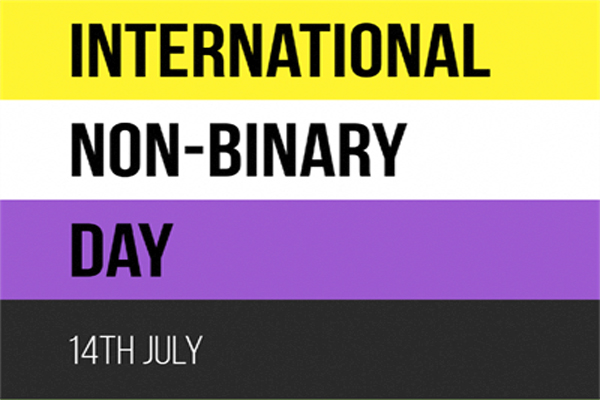Today, on 14 July, we celebrate International Non-Binary People’s Day.
It’s aimed at raising awareness and organising around the issues faced by non-binary people around the world. First celebrated in 2012, the date was chosen for being precisely between International Men’s Day and International Women’s Day.
Non-binary is an umbrella term for people whose gender identity doesn’t sit comfortably with ‘man’ or ‘woman’. However “non-binary identities are varied and can include people who identify with some aspects of binary identities; while others reject them entirely”, according to non-profit organisation Stonewall. Non-binary people can feel that their gender identity and gender experience involves being both a man and a woman; or that it is fluid, in between, or completely outside of that binary.
GENDER IDENTITY
The Trevor Project’s latest survey, revealed that about one in four LGBTQ youths identify as non-binary; or someone who does not identify within the traditional gender dichotomy. According to the survey, which examines the diversity of non-binary youths, another 20% reported that they were unsure or questioning if they are non-binary.
“Young people are using a variety of language to describe the nuances of their gender identity outside of the binary construction of gender,” according to Jonah DeChants, Research Scientist for The Trevor Project. “While there is certainly an overlap, youth understand ‘transgender’ and ‘non-binary’ as distinct identity terms; and you cannot assume one’s identity simply based on the pronouns they use.”
STEPPING UP AS A NON-BINARY ALLY
It’s therefore vital to be mindful of pronouns and ensure you use language that’s inclusive of everyone. There are many ways to be inclusive of everyone, regardless of their gender identity. Language and the way we speak is often embedded with hidden gendered cues, according to non-profit Stonewall. But, once we start to notice them, we can move towards using language that’s inclusive for all. Stonewall recommends a few ways you can step up as an ally to non-binary people, such as:
- Introduce yourself with your name and pronoun. Stating your pronouns reminds people that it might not always be immediately obvious what pronoun someone uses.
- Put your pronouns in your email signature or social media profile.
- Instead of addressing groups of people with binary language such as ‘ladies and gentlemen’, try more inclusive alternatives such as ‘folks’, ‘pals’ or ‘everyone’.
- Use words that define the relationship instead of the relationship and gender. For example, use ‘parents’, ‘partner’, ‘children’ or ‘siblings’.
- Not everyone is comfortable with gendered titles such as ‘Ms’ or ‘Mr’. Titles are not always necessary; but if they must be used it’s good to provide alternative ones such as ‘Mx’ (pronounced mix or mux). Click here for more advice and recommendations.
CHALLENGING STEREOTYPES
Several surveys from organisations such as Getty Images and Shutterstock reveal that the LGBTQ+ communities also feel that they are often ‘stereotyped’ and ‘inauthentically’ represented visually. This diverse community wants to see better visual representation of non-binary people and experiences, according to new research from Shutterstock and the It Gets Better Project. Click here to read more.








































